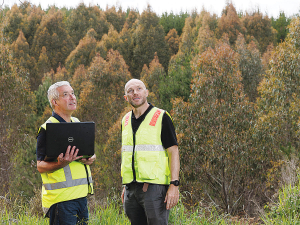 NEW ZEALAND — A two-year research project has shed light on the promising opportunities for regional New Zealand to adopt short rotation forestry (SRF) for bioenergy production. The findings are said to show that leveraging short rotation forestry will not only diversify regional economies, but also contribute to sustainable land management and generate environmental benefits as New Zealand looks for ways to meet its netzero emissions targets by 2050. Silviculture and forest carbon scientist Alan Jones says Scion’s modelling shows that short rotation forestry as a feedstock for bioenergy has the potential to replace 6% of New Zealand’s annual fossil fuel demand from less than 1% of the land area. …A key outcome from Scion’s research is a ‘how to’ guide for short rotation forestry targeting landowners, forest investors, and government agencies. It not only outlines the feasibility of SRF but also identifies specific regions most suitable for it in New Zealand.
NEW ZEALAND — A two-year research project has shed light on the promising opportunities for regional New Zealand to adopt short rotation forestry (SRF) for bioenergy production. The findings are said to show that leveraging short rotation forestry will not only diversify regional economies, but also contribute to sustainable land management and generate environmental benefits as New Zealand looks for ways to meet its netzero emissions targets by 2050. Silviculture and forest carbon scientist Alan Jones says Scion’s modelling shows that short rotation forestry as a feedstock for bioenergy has the potential to replace 6% of New Zealand’s annual fossil fuel demand from less than 1% of the land area. …A key outcome from Scion’s research is a ‘how to’ guide for short rotation forestry targeting landowners, forest investors, and government agencies. It not only outlines the feasibility of SRF but also identifies specific regions most suitable for it in New Zealand.